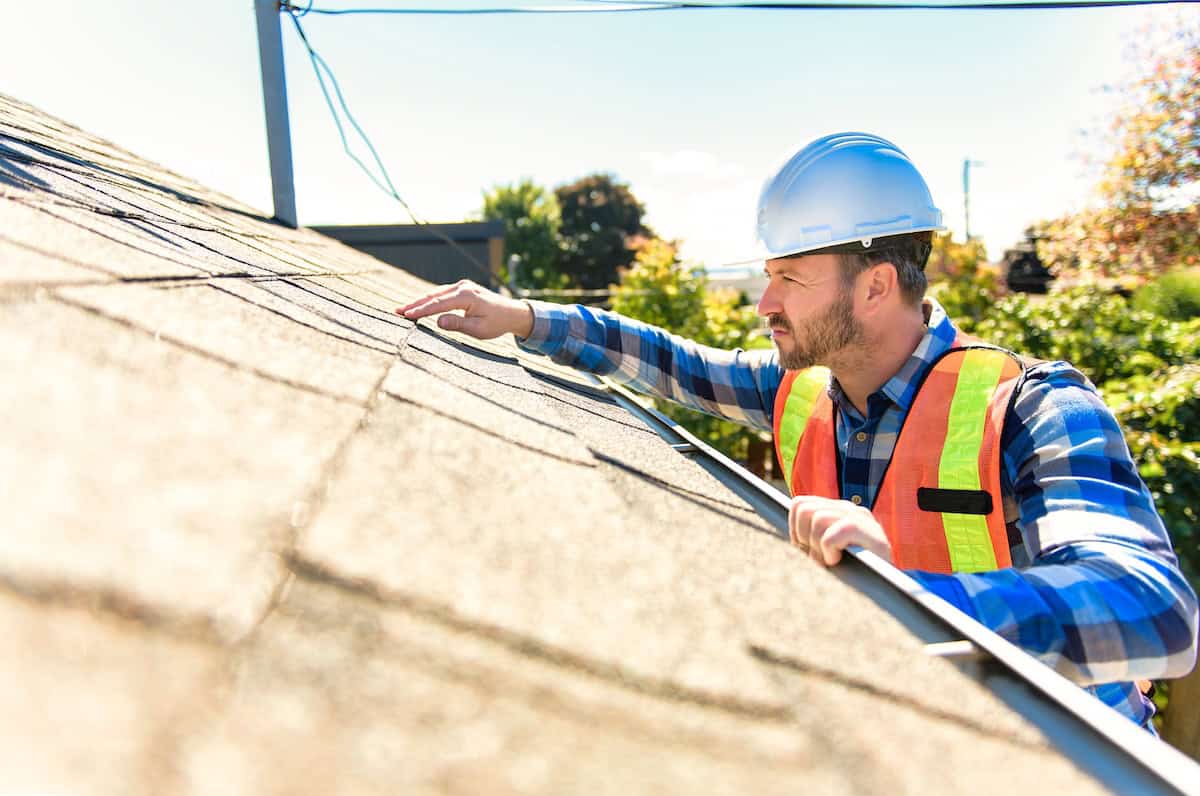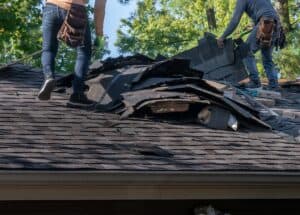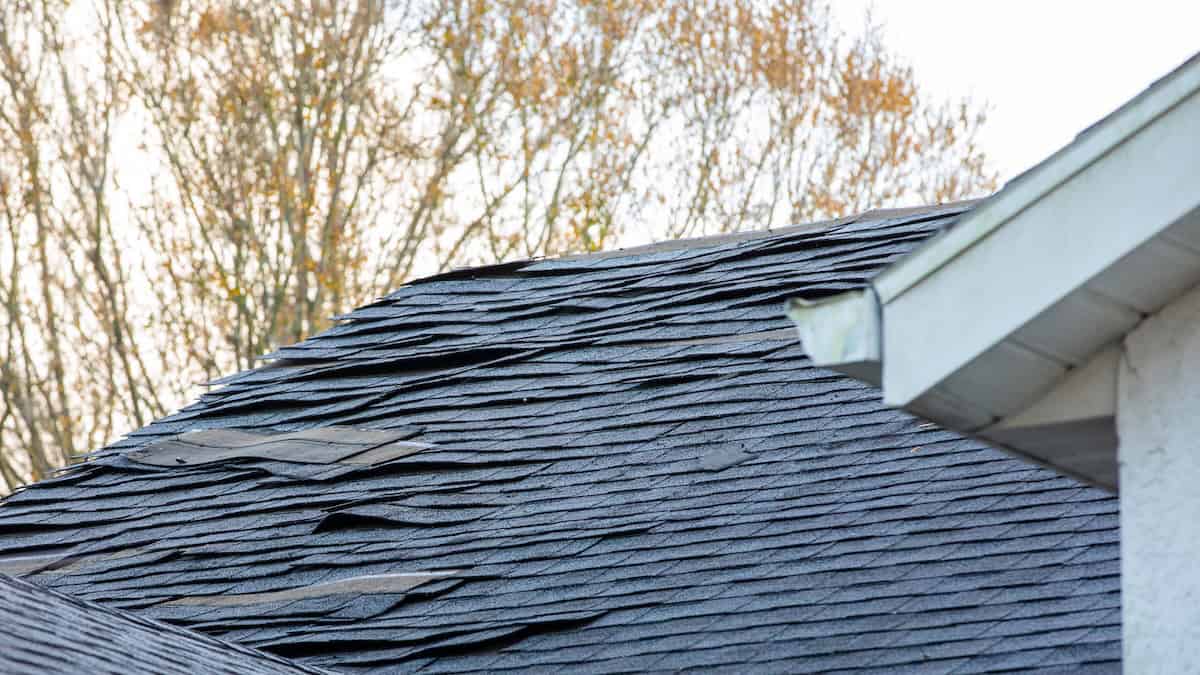Storms can wreak havoc on your home, and one of the most commonly affected areas is the roof. Roof storm damage can range from minor issues, like missing shingles, to extensive structural concerns that threaten the safety and integrity of your home. Knowing what to do after a storm is critical to protect your property, minimize further damage, and ensure your family’s safety.
Here’s what we’ll cover in this blog post:
- The first steps to take after a storm
- Common types of roof storm damage and how to identify them
- When to call in a professional for roof repair
🔍 Assessing the Situation After a Storm
The moments immediately following a storm can be overwhelming, especially if it’s clear that your home has been affected. Taking the right steps early on can save you time, money, and stress.

Stay Safe and Evaluate Risks
Before addressing any damage, ensure it’s safe to go outside. Downed power lines, flooding, and debris can all pose significant risks. Check for visible signs of damage from the ground and avoid climbing onto the roof, as it could be unstable.
Document the Damage
Take detailed photos and videos of the damage to your roof. This documentation will be essential for filing an insurance claim. Capture images from multiple angles, focusing on missing shingles, dents, and other visible damage.
Secure Temporary Repairs If Necessary
If possible, cover leaks with a tarp to prevent further water damage to the interior of your home. Avoid attempting major roof repairs on your own, as this can be both dangerous and ineffective without professional tools and expertise.
⛈️ Types of Roof Storm Damage
Storms can impact your roof in a variety of ways, depending on the severity of the weather and the materials used in your roofing system. Below are some common types of roof storm damage and how you can recognize them.
Hail Damage

Hailstorms can leave noticeable dents or bruises on shingles, causing granular loss and weakening the roof’s overall integrity. Signs of hail damage include:
- Round dents on metal flashing, gutters, or vents
- Small, dark divots on shingles
- Loose granules collecting in gutters or downspouts
Wind Damage
High winds can rip shingles from your roof and leave the decking exposed to further damage. Look for:
- Missing or torn shingles
- Loose flashing around chimneys, vents, or skylights
- Bent or misaligned gutters
Water Damage
Heavy rain can lead to leaks, especially if your roof already has vulnerabilities. Signs of water damage include:
- Stains or discoloration on ceilings and walls
- Sagging areas in your roof
- Mold or mildew growth inside your home
Debris Damage
Falling branches and other debris can puncture your roof or weigh down areas, leading to structural damage. Watch for:
- Visible punctures or holes
- Cracked or broken shingles
- Sagging or uneven rooflines
Tree Damage
A direct hit from a fallen tree can leave your roof severely damaged. If this happens, evacuate your home and hire a professional roofing expert to assess the structural safety.
📋 Roof Repair Process After Storm Damage
Once you’ve determined that your roof has sustained damage, it’s essential to move quickly to address the issue. Here’s what to expect during the roof repair process:
Inspection by a Roofing Professional
The first step is to have a professional roofer inspect your property. They’ll assess the extent of the damage, identify underlying problems, and provide a detailed estimate for repairs.
Filing an Insurance Claim
Most homeowners’ insurance policies cover roof storm damage. Work closely with your insurer to file a claim, providing any photos or documentation you’ve collected. Many roofing companies can also assist with the claims process to help ensure a smooth experience.
Temporary Fixes vs. Permanent Repairs
Depending on the severity of the damage, immediate temporary fixes may be necessary to prevent further harm. Once approved by your insurer, permanent repairs can begin.
🛠️ DIY vs. Professional Roof Repair
When faced with roof damage, many homeowners consider taking the matter into their own hands to save money. However, DIY repairs often lead to more harm than good. Here’s why hiring a professional is always the better option:
Expertise and Safety
Climbing onto your roof without proper training and equipment can be dangerous. Professional roofers have the expertise to perform repairs safely and effectively.
Quality Repairs
A professional will ensure that your roof is repaired to the highest standards, reducing the likelihood of recurring issues. They can also identify hidden damage that might not be visible to an untrained eye.
Warranty and Insurance Compliance
Many roofing warranties and insurance policies require that repairs be completed by a licensed professional. DIY attempts can void your coverage, leaving you responsible for any future costs.
Cost Savings in the Long Run
What might seem like a cost-saving DIY project often leads to additional expenses down the road. Poorly executed repairs can cause further damage, necessitating more extensive and expensive solutions.

🤔 How to Choose a Reliable Roofing Professional
- Check Credentials: Ensure the roofing company is licensed, insured, and certified. This protects you from liability in case of accidents and ensures quality work.
- Read Reviews and Testimonials: Look for reviews online to see how the company has performed for other homeowners. Testimonials can provide valuable insights into their customer service and reliability.
- Ask About Experience: Choose a roofing company with years of experience, particularly with roof storm damage and repair work.
- Request a Written Estimate: A professional roofer will provide a detailed written estimate that outlines the scope of work, materials, and costs.
- Check Their Insurance Assistance Process: Many reputable roofing companies will assist with filing insurance claims, ensuring you receive the maximum coverage for your roof repair.
👍 Preventative Measures to Protect Your Roof
While storms are unavoidable, there are steps you can take to minimize damage in the future.
Regular Inspections
Have your roof inspected by a professional at least once a year, as well as after major storms. Early detection of issues can prevent more extensive damage.
Trim Overhanging Branches
Keep trees near your home trimmed to reduce the risk of falling branches during high winds.
Maintain Gutters and Downspouts
Clear your gutters regularly to prevent water buildup, which can lead to leaks and structural damage.
Invest in Impact-Resistant Materials
If you live in an area prone to severe weather, consider upgrading to impact-resistant shingles or metal roofing to provide an extra layer of protection.
⭐️ Why Walsh Roofing is the Team to Trust
At Walsh Roofing, we understand how stressful roof storm damage can be. That’s why we’re committed to providing top-notch service, expert craftsmanship, and peace of mind to homeowners like you. Here’s why our customers trust us for their roofing needs:
- Experience You Can Count On: With years of experience in roof repair and storm damage restoration, our professional team knows what it takes to get the job done right.
- Customer-Centric Approach: We’re not satisfied until you are. From transparent pricing to excellent communication, we prioritize your satisfaction every step of the way.
- Insurance Claim Assistance: Filing an insurance claim can be overwhelming, but we’re here to help. We work directly with insurers to ensure your claims process is smooth and stress-free.
Don’t wait until a small issue becomes a major problem. Contact Walsh Roofing today for a professional estimate and get your roof back in shape, fast.

